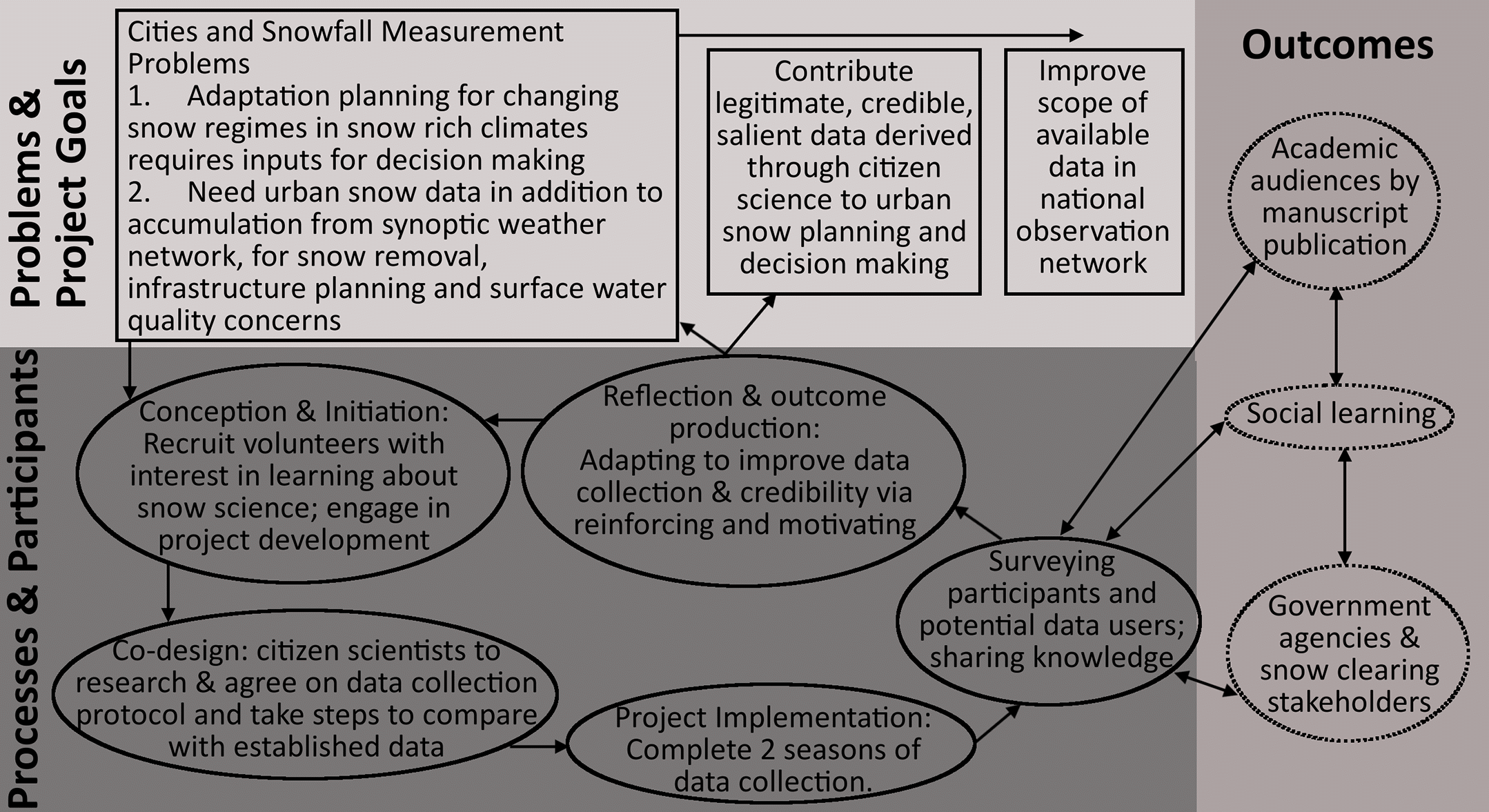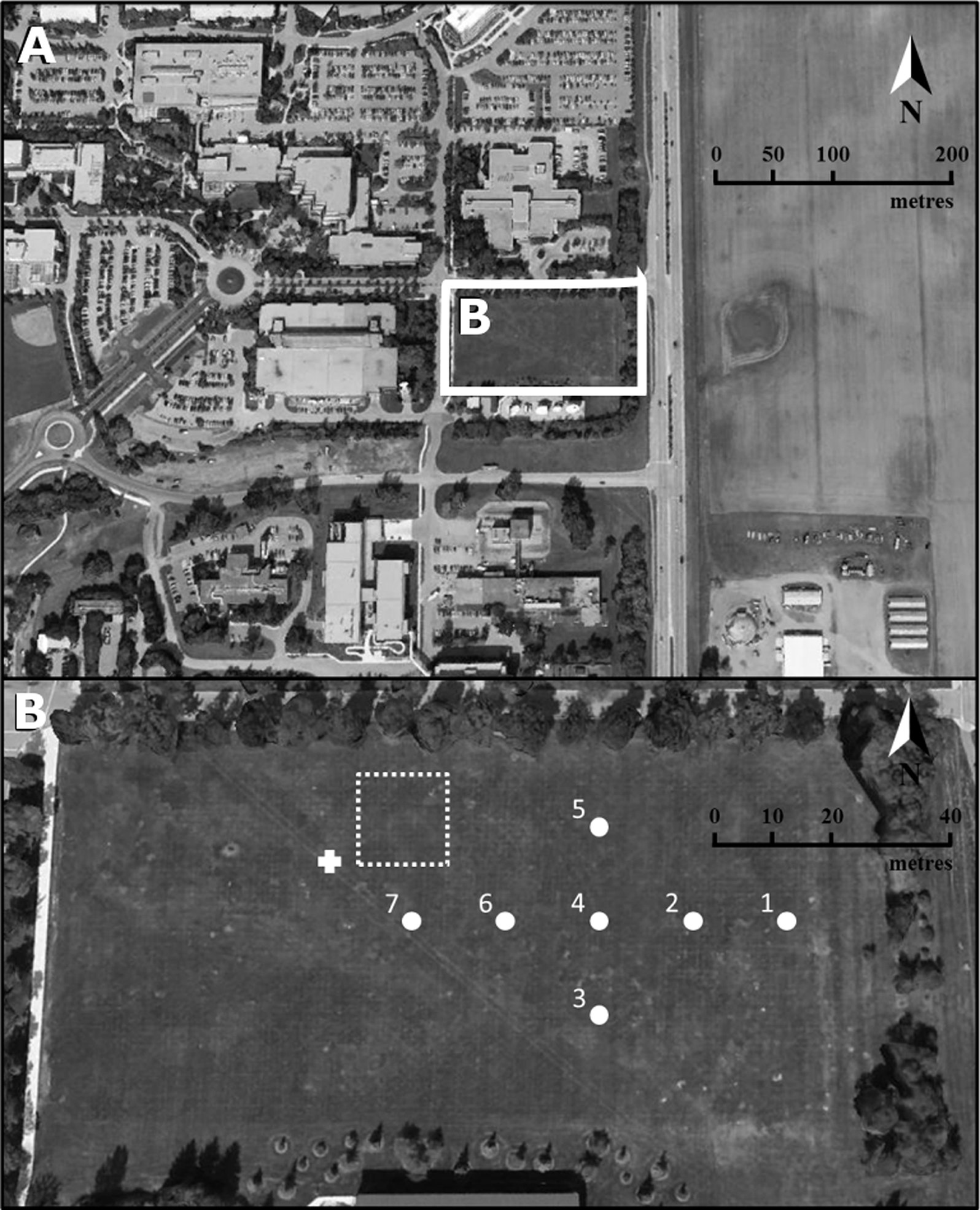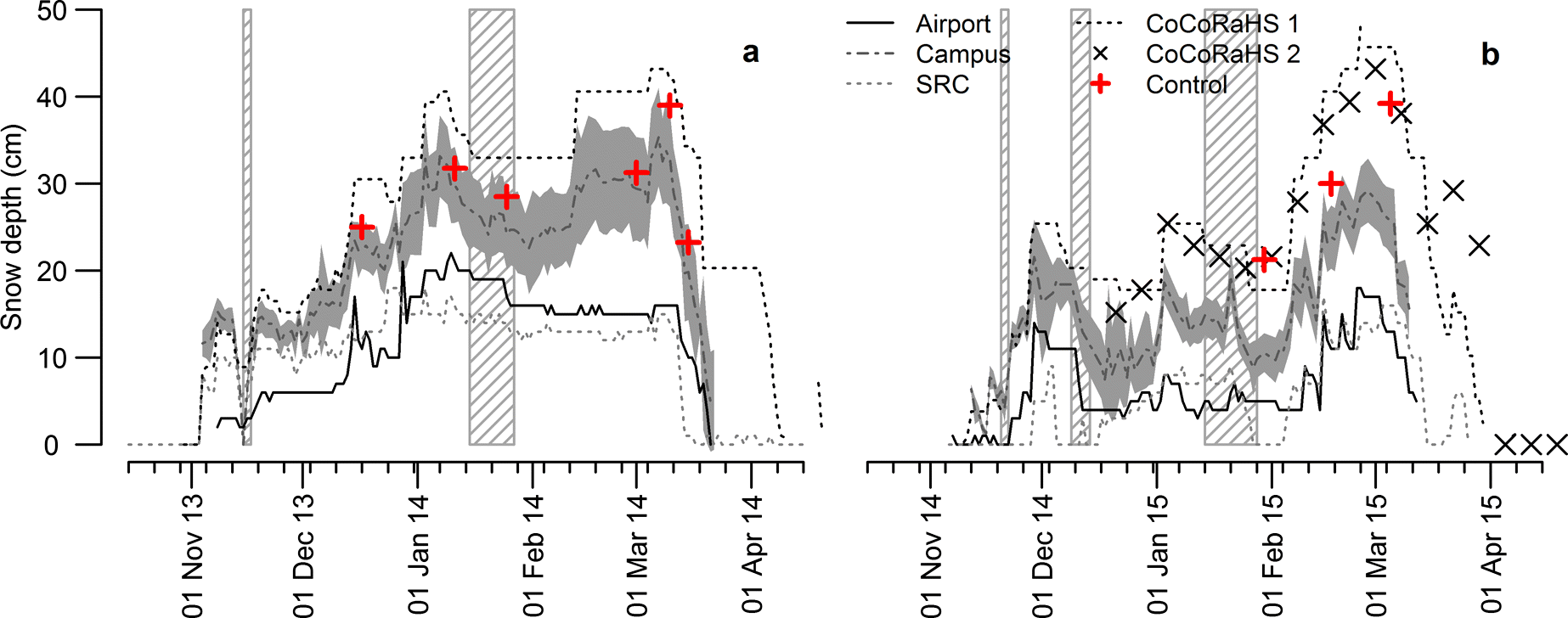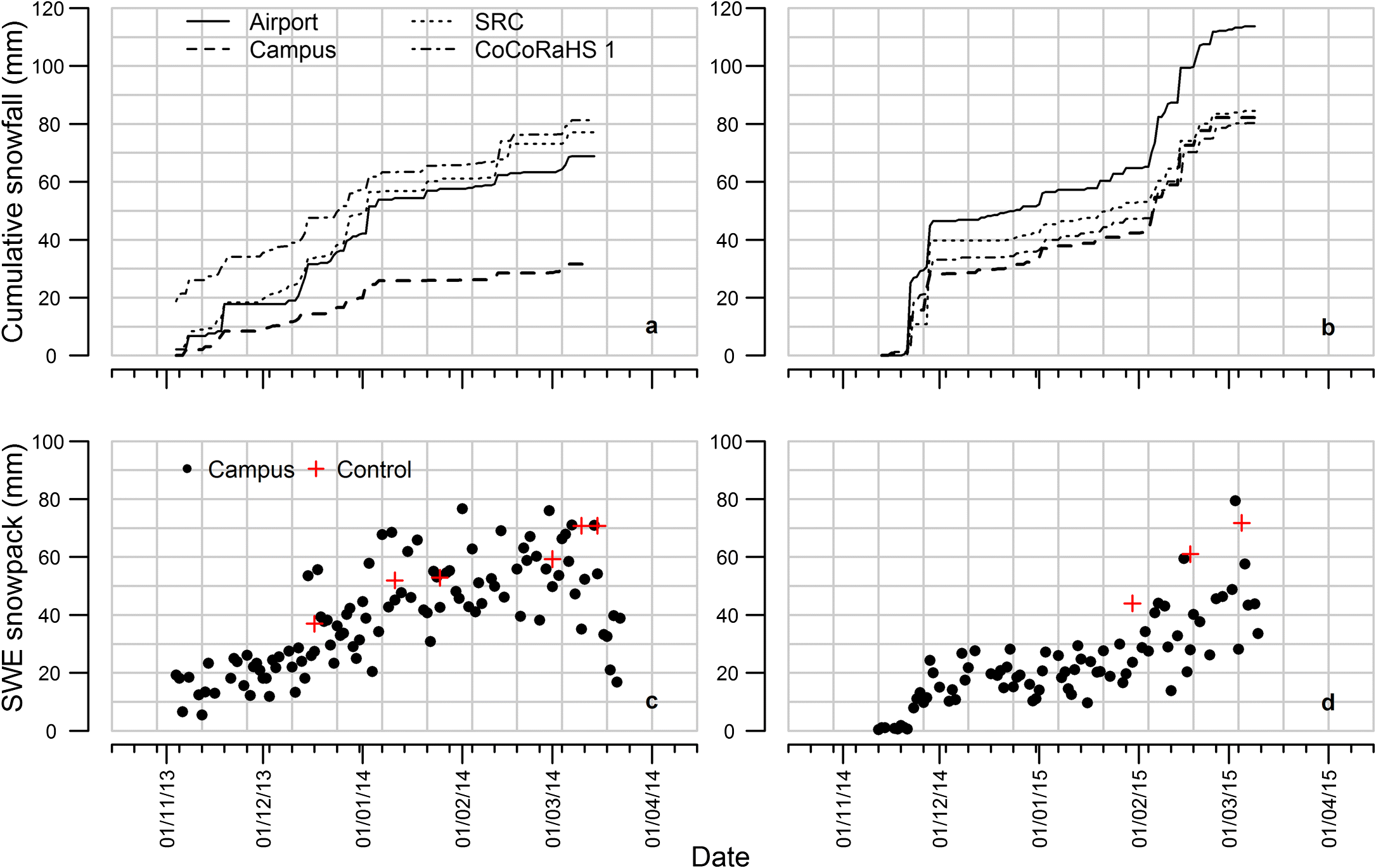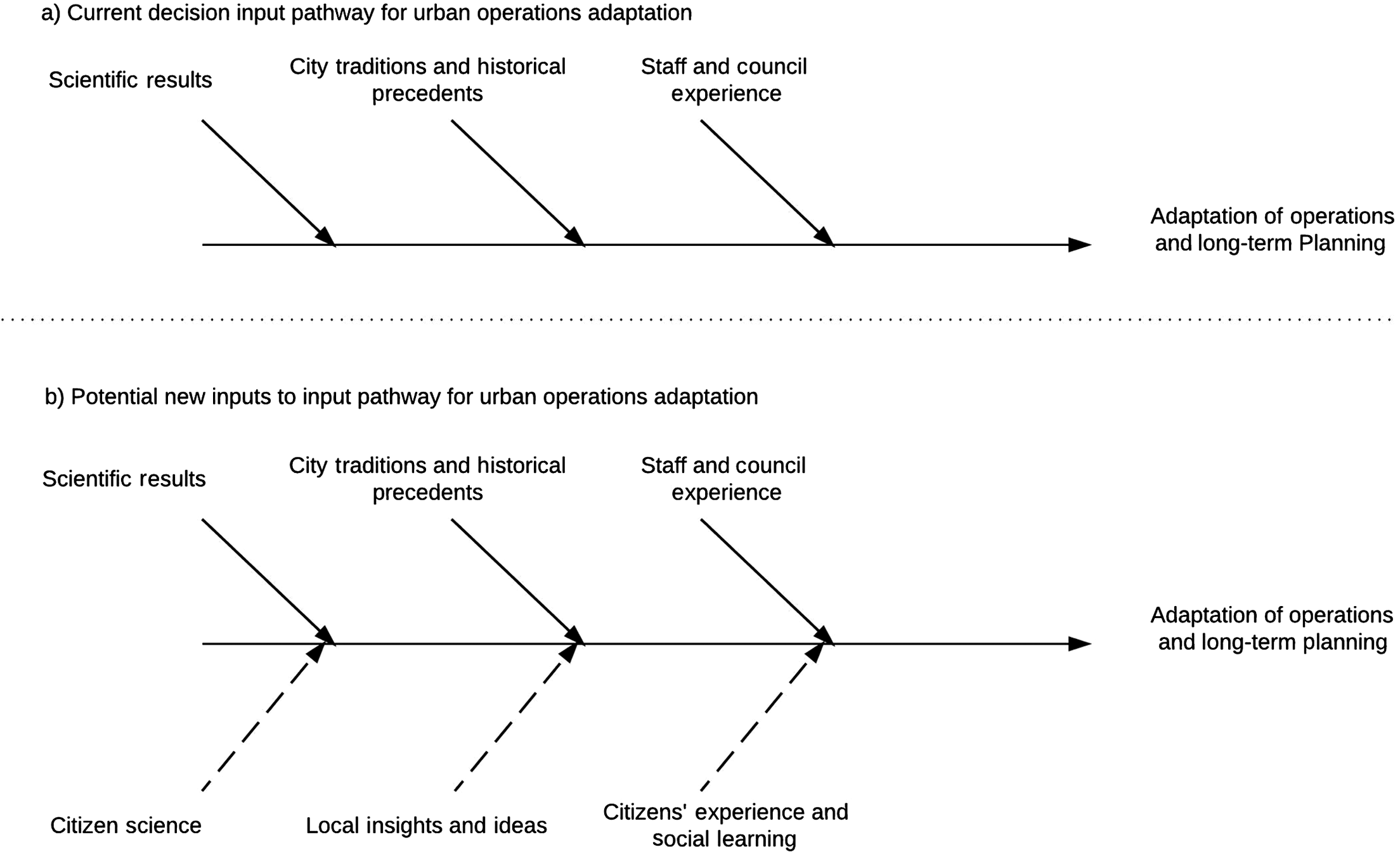Social learning in sustainability science
Adaptation planning for cities is urgent given anthropogenically induced climate change realities such as flooding, droughts, and changing winter storms and spring thaw (
Hunt and Watkiss 2011). The current paradigm in sustainability science attempts to understand the dynamic interactions between physical and social knowledge systems. The core of this paradigm is to pay equal attention to the influence that society has on the environment and the influence that the environment has on society (
Clark and Dickson 2003). In few other contexts do these interactions play out more frequently and strongly than in cities where high population densities meet resource stress and high demands for service on a day-to-day basis.
In the current state, cities depend on formal scientific inputs, the experiences of their staff and council members, and the city’s history to make decisions on their “urban metabolism” or the planning and management of operations (
Kennedy et al. 2011;
Kalmykova et al. 2015). Much of the focus has been on making evidence-based decisions to support the transformation to sustainable cities (
Kitchin 2014); however, difficulties in providing the necessary evidence have been noted (
Corfee-Morlot et al. 2011). Chief among these hurdles is the need to identify local urban vulnerabilities and institute proactive monitoring programs that provide timely and effective responses (
Hallegatte and Corfee-Morlot 2011). From an urban management point of view, there is an urgent need to extend the policy focus beyond experts when it comes to contributing to the urban sustainability agenda (
Franklin et al. 2011). Residents—experts and laypersons alike—can develop skills and knowledge to contribute directly to this agenda, particularly when they are committed to a group endeavor (
Wenger 1998).
Understanding research skill development and knowledge generation as products of social learning (
Bandura 1977;
Crain 2016) is, therefore, an important aspect of creating sustainable communities (
Franklin et al. 2011). Social learning through citizen science occurs at various scales and contributes, at the individual scale, to data collection, analysis, and skill development; and, at the wider scale, to broader climate change adaptation planning (
Yuen et al. 2013), enhanced engagement of citizens (
Jordan et al. 2012), and leveraging of underused knowledge sources including local and traditional knowledge (
Bonney et al. 2014).
Different types of citizen science have been defined theoretically and empirically (e.g.,
Irwin 1995;
Wiggins and Crowston 2011). Citizen science studies are broadly grouped into three main types that are related to (1) data generation, (2) public engagement, and (3) knowledge generation. Citizens are typically engaged to perform data collecting and processing activities (
Silvertown 2009) and sometimes to provide research tools for scientific enquiry (
Devictor et al. 2010;
Dickinson et al. 2010). Ideally, the citizen is not merely an agent but also a peer that provides new perspectives and feedback on physical science research (
Irwin 2001). Citizen science can be used to reach out to the general public and gain their buy-in (
Gura 2013). Citizen science can also be used for gaining the legitimacy of some local government actions or international mandates, e.g., studies from West Africa and the Caribbean that showed how Indigenous knowledge could be incorporated in a specific type of forest management (
Leach and Fairhead 2002). Furthermore, citizen science can liberalize traditional knowledge generation processes (
Buytaert et al. 2014). The change from seeing citizen scientists as learners to considering them as engaged scientists and collaborators for decision-making is difficult for urban managers and scientists alike (
Cooper et al. 2007;
Paulos et al. 2008). Although it has been recognized that it could be difficult for studies based on citizen science data to get through peer review, the situation appears to be improving (
Gura 2013).
Citizen science efforts require organization and coordination at a variety of scales and across a variety of landscapes, ranging from local and nested neighborhoods within cities to continental scales (
Cooper et al. 2007). The management of conflicting perspectives of citizen scientists and collaborators requires mutual respect and reflection (
Bouillon and Gomez 2001). The success of such projects is, therefore, best evaluated not only against standards of
credibility (i.e., the soundness of the data) but also against measures of
legitimacy and
salience (
Cash et al. 2002) including the fairness and inclusiveness of the procedures with which the data were generated and the relevance of the information to decision makers or the public. To enhance legitimacy, citizen science projects in the context of sustainability should consider the different motives for participation. Collective, norm-motivated, reputational, and intrinsic motives have been reported, with collective and reputational motives positively affecting the quality of citizen science contributions (
Nov et al. 2014). Finally, because citizen science projects produce data sets but do not identify mechanisms for explaining data patterns, they are still viewed as complementary to more localized hypothesis-driven research (
Dickinson et al. 2010).
Volunteer observations have a long-standing history in meteorology. More recently, meteorological institutions have started to incorporate these data to improve their forecasts and operational management through cooperation with, or foundation of, volunteer networks, e.g., the Community Collaborative Rain, Hail & Snow (CoCoRaHS) network throughout North America (
cocorahs.org, since 1997), the Vereniging voor Weerkunde en Klimatologie (VWK) in the Netherlands (
vwkweb.nl, since 1974), or the Weather Observation Website (WOW) in the UK (
wow.metoffice.gov.uk, since 2011).
Cities and snowfall
In the near future, over 60% of the global population will live in cities; organic conglomerates of people, infrastructures, and processes that are innovative, surprising, and vulnerable to catastrophe (
Worldwatch Institute 2007;
Batty 2012). There is increased pressure to plan and manage cities in a sustainable way (
Cook and Lara 2012). One example of this in a northern context is snow management in the urban environment.
In regions that receive a large part of their annual precipitation in the form of snow, accurate measurements of snowfall and snow accumulation guide city planning and management activities such as snow clearing and flood forecasting during the spring melt. As snow deposition is highly susceptible to wind-affected redistribution and ablation (
Pomeroy and Gray 1995), carefully designed observation networks are important for sustainable water management and water security. Synoptic weather stations such as those operated by Environment and Climate Change Canada (ECCC) are typically located outside of the zone of influence of urban centers, to avoid snowfall modifications resulting from the winter urban heat island effect (
Perryman and Dixon 2013). Snowfall and accumulation observations in cities will, therefore, often vary from those reported in the publicly accessible database of ECCC. To date, the magnitude and importance of those differences have been poorly quantified (
Mölders and Olson 2004).
Understanding the sustainability of the relationship between people and snow in the urban landscape requires the consideration of social, environmental, and economic factors (
Andersson 2006). In the social sphere, snow is often disdained in cities for its negative effects on transportation and maintenance (
Hansson and Norberg 2009). The collective interest in better managing snow services in the city is of note because of community buy-in; for example, in many northern and high-altitude cities around the world, snow removal is one of the most important issues to citizens (
Kishi et al. 2002;
Hesse 2014;
Hong et al. 2015). Effective snow removal enhances a city’s ability to continue to provide emergency services and facilitate urban transportation and other amenities. Snow is not only an important source of water supply to the urban landscape but also a continuous source of uncertainty in city budgets and adaptation planning. The costs of snow and ice management alone for the City of Saskatoon reached over $13 million CAD in 2014, but due to unpredictable weather patterns, additional contingency planning was needed as the budgeted finances soon were spent. Amid changing snowfall regimes, there is, thus, a need for better monitoring and provision of scientific support to urban managers for snow services (
Brown and Mote 2009;
Rees et al. 2014).
